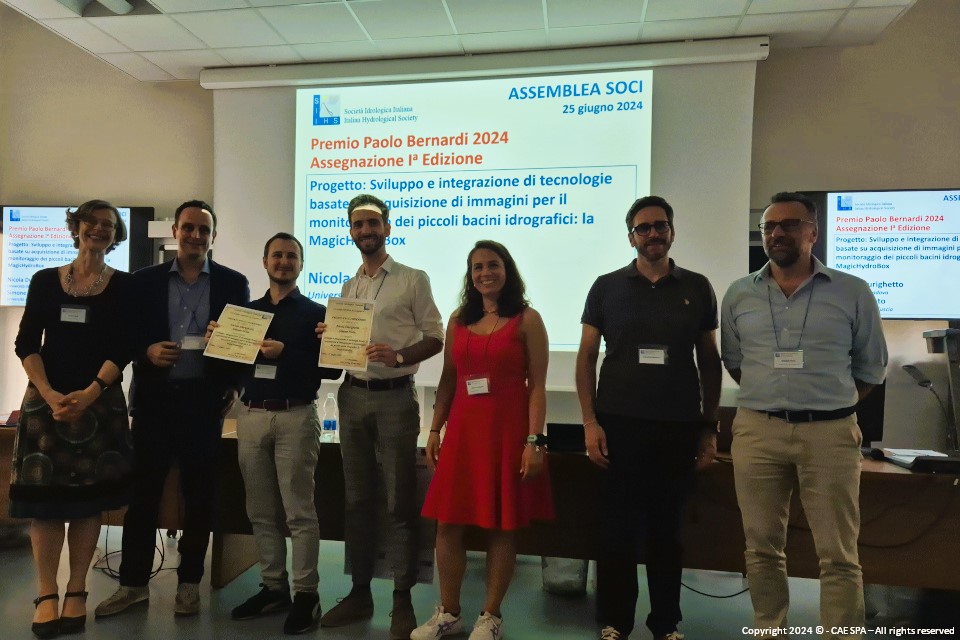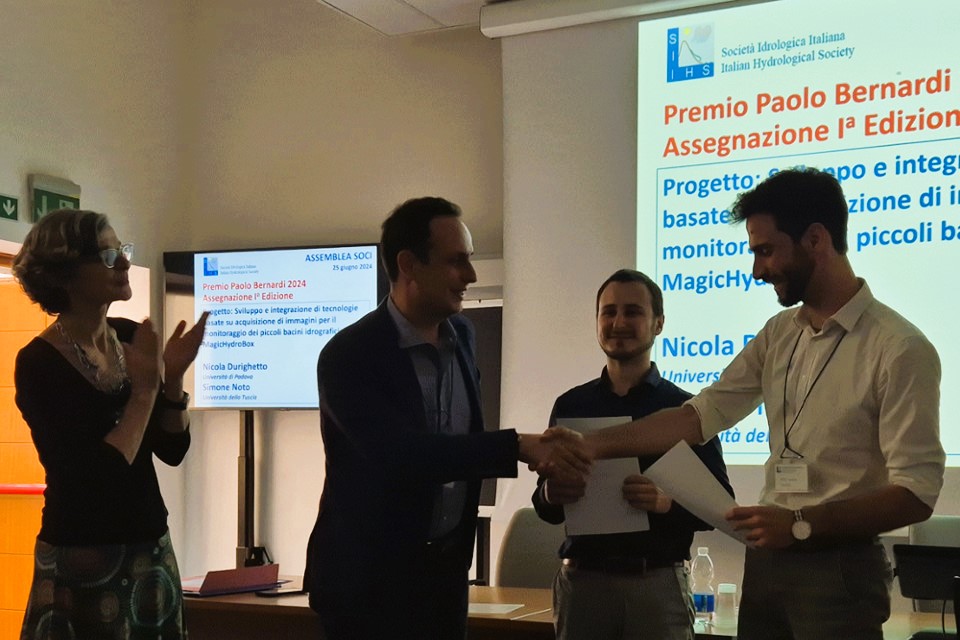Awarded the "Paolo Bernardi Prize": Computer Vision to learn more about canals and streams
It is to commemorate the inventive genius of Engineer Paolo Bernardi, who passed away on 26 August 2023, that CAE supports the "Paolo Bernardi Prize" for research in operational hydrology, organised by the Italian Hydrological Society, of which he was one of the founding members.
A choice consistent with the history of the company, whose four founding partners all had a past as researchers and who found that their technical innovation skills were the basis upon which to build the entrepreneurial initiative. A choice that is consistent also with the present of CAE, which constantly invests in innovation, certain that this is the key element for future growth.
The prize, of € 5,000.00, is dedicated to applied research projects for the advancement of operational practice in the field of non-structural solutions based on real-time monitoring of phenomena, for the management and mitigation of risk due to extreme weather events and for the management of water resources.
The winning project of the first edition of 2024 is entitled "Development and integration of technologies based on image acquisition for the monitoring of small river catchments: the MagicHydroBox" and it was announced and awarded on the occasion of the Hydrology Days, organised by SII, which were held from 24 to 26 June in Udine.
The winners are Engineers Simone Noto and Nicola Durighetto, whom we asked to tell us more about the project.
Why choose the study of small basins and in particular ephemeral and intermittent waterways?
We decided to focus on these catchments because they contain stretches cyclically affected by dry periods, which generate a dynamic of expansion and contraction of the river and stream network. In recent decades, the importance of these waterways has been recognised not only for their hydrological function but also for their biological, biogeochemical and ecological functions. However, the need to study and monitor the dynamics and their implications at an environmental, ecological, and anthropic level, in natural and urban contexts, has been met with the difficulty of monitoring the hydrological quantities of greatest interest, due to a series of geomorphological and environmental factors (e.g., difficult accessibility, irregular geometry of the sections, moving bottom, absence of electricity, etc.). Consequently, these contexts represent a difficult field of application for traditional tools for measuring the water height.
Briefly, what is the objective of the project you presented?
The project aims at overcoming the limitations characterising the methodologies used so far in the monitoring of ephemeral and intermittent waterways, while exploiting their potential and improving their performance, proceeding on two parallel fronts:
1. the optimisation of algorithms for the processing and analysis of images and videos, acquired with the aforementioned methods, in order to derive qualitative and quantitative information on the hydrological status of ephemeral and intermittent waterways;
2. the design and development of a unique tool that integrates on-site image/video acquisition and processing capabilities with the transmission of product data and autonomous power supply.
What are the most innovative aspects of the project?
The novelty mainly concerns the integration of multiple on-site processing capabilities into a single tool, designed to be used in conditions where application is difficult, such as small catchments without instrumentation. The second innovative aspect, compared to the technologies tested so far, concerns the transmission of data in at least daily intervals, in order to guarantee real-time monitoring and the timeliness of maintenance activities in the event of malfunctions.
What are the next steps to turn your project into reality?
We now foresee a year of work to complete all the planned activities, including the tests for the implementation of the same that will take place on two different experimental sites, one in the Mediterranean catchment of Montecalvello and one in the Alpine catchment of the Rio Valfredda, selected for their marked spatio-temporal dynamics of the river and stream network and for the diversity and heterogeneity of the environmental conditions offered.
A thank you to the Italian Hydrological Society that has established this prize in memory of Engineer Bernardi, founder of CAE S.p.A., who has dedicated his entire life to research and work aimed at mitigating environmental risks and who, thanks to this prize, will continue to contribute to the creation of a safer world.
Back to the news index


